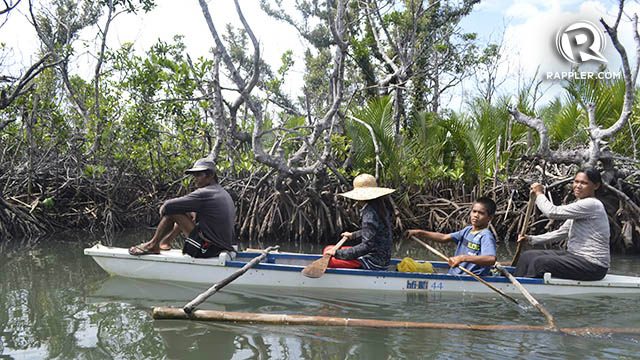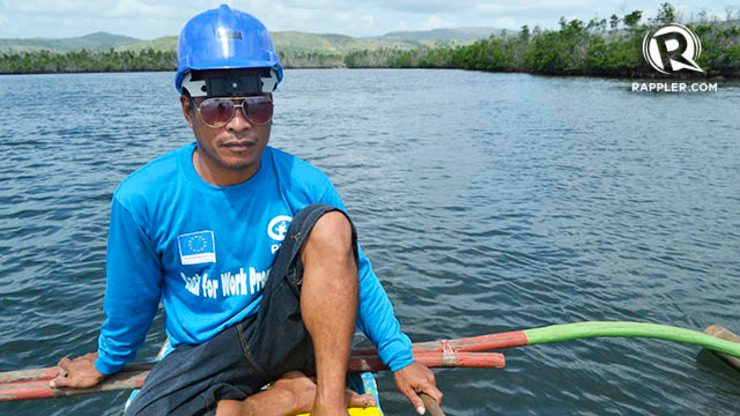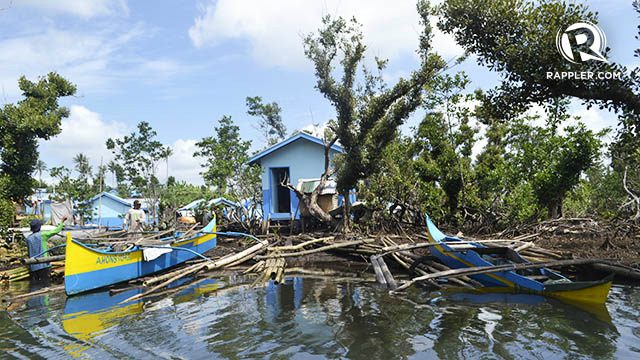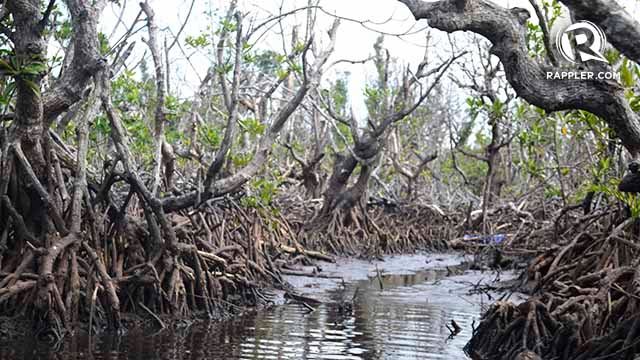SUMMARY
This is AI generated summarization, which may have errors. For context, always refer to the full article.

TACLOBAN CITY, Philippines – Jully Pallear remembers November 8, 2013 like it was just yesterday.
He knew he had to evacuate his family so he wasted no time. With a few valuables in tow, the 42-year-old father brought his wife and 6 kids to a higher place far from the coast.
Instead of joining his family to safety, Pallear selflessly decided to go back to his community and stay to help the vulnerable seek shelter inside a chapel.
With one hand clinging to a post and the other one securing his neighbors from Barangay Parena in the municipality of Giporlos, Easterm Samar, he braved the strong wind and the flood.
The water was high but not as devastating as Tacloban, the residents of Barangay Parena said.
Despite 123 out of 153 houses being destroyed, Pallear thinks that they’re still fortunate and they have the mangroves to thank.
“Kung hindi dahil sa mga mangroves, mas mataas ang tubig,” he told Rappler. “Panigurado lahat kami wala na.”
(If it weren’t for the mangroves, the water would have been higher. We all would’ve died for sure.)

New ‘tree of life’?
The coconut tree is the tree of life in the Philippines because of its many uses.
But coastal areas along Eastern Samar regard mangroves as a close second – if not the most important.
As a village heavily dependent on fishing, fisherfolk make the most out of their daily trips to the sea in hopes of a great catch enough to put money in their pockets and food on their tables.
They used to have no problem when it comes to food as the body of water near the municipality boasted of abundant fish and the long stretch of mangroves became their breeding ground. It was, then, enough to not go hungry.
Residents also sourced crabs from the tangled roots of the various types of mangroves to sell for additional income.
But everything changed when Typhoon Yolanda struck the Visayan region.
According to barangay statistics, 70% of the mangroves were damaged when one of the strongest typhoons ever recorded ravaged the coastal areas of Eastern Samar.

Branches of mangroves were torn, while debris of houses got caught in between spaces of the stretch. When the sky cleared the following day, the mangroves looked like an abused strainer.
“Siya lahat sumalo mula sa ibang lugar,” Pallear said. “Pero naapektuhan din talaga.” (The mangroves really caught all the debris but these mangroves were also affected.)
Unlike before, the quantity of each catch declined and crabs were seldom seen in their usual areas. In most cases, they wouldn’t even have enough to eat.
“Hindi na sapat ang huli ngayon para sa pamilya,” a local community head said. “Wala na ring nabebenta kaya bawas sa kita.” (Our catch isn’t enough anymore for the family. We also do not have anything more to sell so income has declined.)
Regaining what’s lost
Through PLAN International’s cash-for-work program, they chose to fund the reforestation of their damaged treasure.
“Treasure na sa amin ang mga iyan,” one resident said. “Malaki ang tulong talaga.” (The mangroves are our treasure. They’re of big help really.)

Unfortunately, it will take 10-15 years until everything goes back to their original form but they remain hopeful, given the various projects of non-governmental organizations.
When the livelihood in Barangay Parena becomes stable again, Pallear hopes that his family’s life will return to normal, if not become better, again.
To date, 3 of his kids are not studying due to financial problems inflicted by Yolanda, but he knows that a bright future lies ahead of them.
“Ngayon lang iyan kasi mahirap ang buhay talaga,” he told Rappler. “Pero kapag nakaluwag na, gagawin ko na ang lahat para makapagtapos sila.” (That’s only for now since life is hard really. But when we’re okay, I’ll do my best for them to finish their schooling.) – Rappler.com
For Rappler’s full coverage of the 1st anniversary of Super Typhoon Yolanda (Haiyan), go to this page.
Add a comment
How does this make you feel?
There are no comments yet. Add your comment to start the conversation.